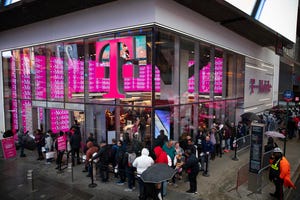Verizon’s fiber-fed network signs up many fewer video and broadband subs in Q1 as FiOS starts to saturate its market.

In a sign that its FiOS platform may have saturated the market, Verizon Communications Inc. (NYSE: VZ) reported Thursday that it signed up far fewer new video and broadband subscribers in the first quarter. Verizon also signed up significantly fewer TV and data customers for FiOS than AT&T Inc. (NYSE: T) did for its similar U-verse suite of services. (See AT&T U-verse Gains Broadband, Video Subs.)
Verizon picked up just 57,000 FiOS Video customers in the winter quarter, down markedly from 92,000 customers in the previous quarter and 160,000 a year ago. As a result, the telco ended the quarter with 5.3 million FiOS Video subscribers, still more than most US cable operators but increasingly less than U-verse's total.
Likewise, Verizon netted a relatively modest 98,000 FiOS Internet subscribers over the first three months of the year, as it continued to switch its dwindling base of copper DSL subscribers over to its fiber network. That's well below the 126,000 new subscribers that it added in the fourth quarter and the 188,000 that it added a year earlier. Verizon closed out the quarter with 6.2 million FiOS high-speed data subscribers, more than most cable operators again, but now well behind U-verse.
The growth slowdown appears directly related to Verizon's decision not to extend FiOS's reach beyond its existing markets. Although the penetration rates for FiOS's two main services continue to edge up, both take rates have now scaled 35% of the homes in FiOS markets, indicating that there's little room for more growth. Verizon now offers FiOS to 18.8 million homes, far fewer than AT&T has accumulated in its still-expanding U-verse universe.
Not surprisingly, Verizon executives played down FiOS's decelerating growth in its earnings report this morning. Instead, they stressed the still-growing penetration rates for FiOS Video and FiOS Internet, which now stand at 35.0% and 39.7%, respectively. They also emphasized the healthy increases in FiOS revenues, which rose to $3 billion in the quarter, up 15.5% from the year-ago period.
Verizon officials said that a majority (51%) of their FiOS Internet subscribers now take FiOS Quantum, its highest broadband tier with download speeds of 50 Mbit/s to 500 Mbit/s. That's up from 46% of FiOS Internet subs at the end of last year.
— Alan Breznick, Cable/Video Practice Leader, Light Reading
About the Author(s)
You May Also Like











